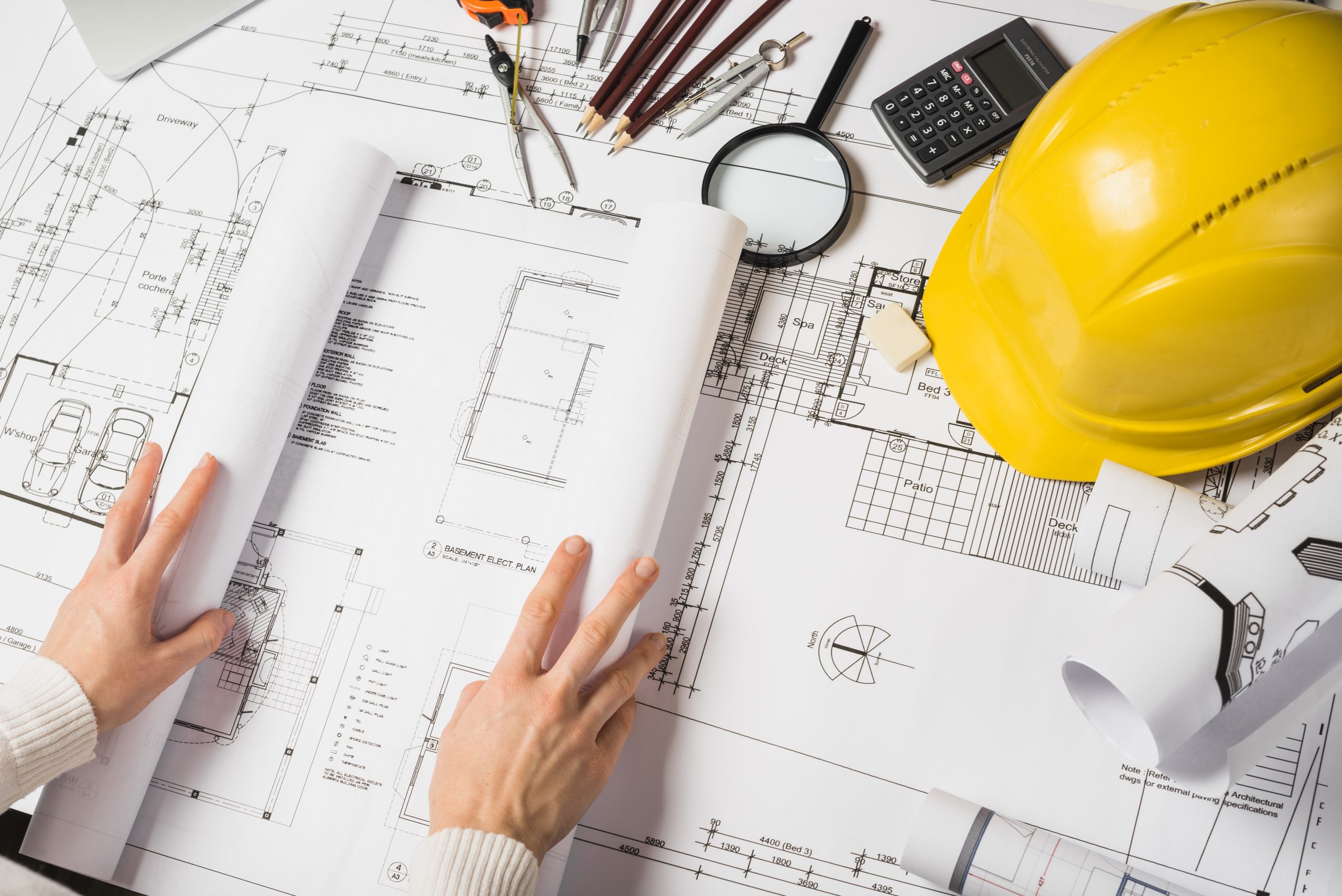Architect Advice on Utilizing Tight Urban Spaces
Architect Advice on Utilizing Tight Urban Spaces
Blog Article
Recognizing the Diverse Profession Paths Available for Aspiring Architect
As an ambitious Architect, you have a globe of career paths waiting for you. Whether you're drawn to conventional style or the subtleties of lasting style, there's a niche that aligns with your passions.
Conventional Architecture: Creating Structures and Frameworks
Conventional design concentrates on making buildings and frameworks that mix capability with visual appeal. Your designs can show social heritage, showcasing neighborhood customs while meeting modern needs.
You'll create abilities in composing, model-making, and website evaluation, permitting you to envision and communicate your concepts effectively. Involving with customers, you'll require to recognize their vision and convert it right into practical styles.
Additionally, developing codes and sustainability practices are vital in your work, ensuring your frameworks are ecologically friendly and safe. As you grow in your career, you'll find opportunities in residential, commercial, or perhaps remediation projects, each offering one-of-a-kind obstacles. Accepting typical design leads the method for a fulfilling occupation that admires the past while forming the future.
Urban Planning: Forming Areas and Public Spaces
As an ambitious Architect, you can play an important duty as a metropolitan coordinator, changing exactly how communities operate and communicate. By using community interaction strategies, you'll assure that locals have a voice fit their atmosphere. And also, integrating lasting design concepts will certainly assist develop spaces that not just meet today's requirements but likewise protect the future.
Function of Urban Planners
While many may think about architects as the single visionaries behind structures, urban organizers play a vital duty fit the more comprehensive landscape of communities and public spaces. They examine land usage, zoning legislations, and area needs to develop sustainable atmospheres that boost lifestyle. By teaming up with various stakeholders, you'll assist design parks, transportation systems, and domestic locations that promote social interaction and access. Urban planners also concentrate on ecological considerations, making sure that growths incorporate green rooms and assistance biodiversity. Your competence in spatial layout and area characteristics allows you to envision future growth while protecting cultural heritage. In this critical duty, you'll straight influence exactly how people experience their environments, making every task a possibility for favorable change.
Community Interaction Strategies
Effective neighborhood engagement approaches are essential for metropolitan coordinators to guarantee that the voices of homeowners are heard and valued in the preparation procedure. To foster purposeful discussion, you ought to focus on open forums and workshops where area participants can express their ideas and problems. By actively paying attention and integrating feedback, you'll produce spaces that show the neighborhood's demands, inevitably leading to more sustainable and effective metropolitan settings.
Lasting Layout Concepts
When developing urban rooms, including sustainable design concepts is critical for producing atmospheres that thrive both environmentally and socially. Take into consideration integrating green spaces, like parks and yards, to enhance biodiversity and boost air high quality.
Designing with water preservation in mind is also key-- assume regarding rain yards and permeable surfaces to handle stormwater. Involving area members throughout the planning procedure assurances that the spaces you develop fulfill their requirements and urge social communication. By accepting these principles, you'll add to lively, sustainable metropolitan landscapes that benefit everybody.

Landscape Design: Producing Sustainable Outside Atmospheres
As you check out landscape architecture, you'll uncover crucial layout concepts that create useful and lovely outside spaces. Lasting methods play an important duty in making certain these atmospheres thrive while minimizing ecological impact. And also, you'll locate a range of career possibilities that enable you to make a real difference in how individuals interact with nature.
Layout Principles in Landscape
Understanding design principles in landscape design is essential for producing sustainable outside settings that harmonize with nature. You'll need to contemplate elements like balance, proportion, and scale to guarantee your styles feel cohesive and inviting. Additionally, pay attention to seasonal modifications, developing with materials that match the surroundings year-round.
Sustainable Practices Overview
Lasting practices in landscape design not only focus on aesthetic appeals but likewise focus on ecological health and wellness and source conservation. You can develop rooms that promote soil wellness, such as practicing and using organic products permaculture principles. Eventually, these techniques guarantee your designs benefit both individuals and the setting for years to come.
Career Opportunities Exploration
With a solid structure in sustainable practices, landscape design supplies a variety of career paths that allow you to make a purposeful effect on the environment. You might work as a landscape developer, developing aesthetically pleasing and functional outdoor spaces, or focus on ecological remediation, aiding to restore broken ecological communities. Urban coordinators commonly work together with landscape designers to produce eco-friendly rooms in city setups, boosting city livability. If you're enthusiastic concerning education and learning, consider becoming a landscape style instructor, motivating future generations. Furthermore, you may function with nonprofits concentrated on environmental sustainability or take part in research to innovate brand-new techniques. Architect Each course not only forms lovely settings yet additionally fosters a healthier world for future generations.
Lasting Style: Concentrating On Eco-Friendly Practices
As you discover your job in architecture, embracing eco-friendly techniques can set you apart in an affordable field. Sustainable design concentrates on developing buildings that minimize ecological impact while improving occupant health. By incorporating eco-friendly materials, energy-efficient systems, and lasting building strategies, you'll add to a greener future.
Begin by gaining understanding of green qualifications like LEED or BREEAM, which can boost your credentials. Think about just how natural light, air flow, and thermal efficiency can maximize design. Team up with designers and environmental professionals to innovate remedies that decrease waste and preserve resources.
Don't neglect the significance click here of community participation-- engaging neighborhood stakeholders can influence designs that integrate with the setting. As clients significantly prioritize sustainability, your proficiency in environmentally friendly methods will certainly not only attract tasks however additionally satisfy your interest for accountable architecture. Welcome this vital element of the occupation, and see your occupation flourish.
Historic Conservation: Protecting and Recovering Cultural Heritage
While you start on your building journey, consider the necessary role of historic preservation in maintaining our cultural heritage. This field focuses on the protection and repair of substantial structures, websites, and frameworks that tell the stories of our past. By engaging in historic preservation, you'll aid guard the building heritage that shapes neighborhood identity.
As a historic preservation Architect, you'll examine historical importance and assess the condition of frameworks. You'll function closely with chroniclers and preservationists to ensure genuine remediation techniques are employed. This occupation path allows you to mix creativity with research, enabling you to develop services that appreciate original materials and craftsmanship.
Your read more job not only adds to sustainability by reusing existing buildings however also cultivates a sense of satisfaction within communities. Welcoming this path will certainly help you come to be a guardian of history, protecting the stories and aesthetics that enhance our lives.
Interior Design: Enhancing Indoor Spaces
Historical preservation and indoor architecture both share a dedication to enhancing the developed environment, however they concentrate on different elements. While historical preservation stresses maintaining a structure's cultural and historic worth, indoor architecture nos in on optimizing indoor rooms for capability and visual appeals.
As an ambitious Architect, you'll find that interior style allows you to blend imagination with technological skills. You'll develop areas that not just look good but additionally promote comfort and effectiveness. This area entails understanding how light, color, and materials engage within a room, affecting mood and functionality.
You'll work with numerous tasks, from domestic homes to business workplaces, ensuring that each environment satisfies the requirements of its owners. By prioritizing user experience, you can transform insides right into motivating and useful spaces, making a considerable effect on exactly how individuals engage with their environments. Accept the chance to boost interior settings and form the means individuals live and function.
Industrial Layout: Combining Capability With Aesthetic Appeals
Industrial style plays a crucial duty in developing items that seamlessly blend visual appeals with functionality, ensuring that what you use day-to-day is not just aesthetically enticing yet additionally functional. As a hopeful Architect, you might involve on your own in this area, concentrating on developing every little thing from furniture to customer electronics. Your work involves understanding user requirements, products, and manufacturing processes, permitting you to develop ingenious services that enhance everyday experiences.
In commercial design, you'll commonly collaborate with marketers, suppliers, and engineers, guaranteeing that your designs are not just stunning yet also practical. This occupation course offers a dynamic atmosphere where imagination satisfies functionality, making it a fulfilling selection for architects interested in shaping the products of tomorrow.
Often Asked Concerns
What Educational Certifications Do I Need to Become a Designer?
To end up being a designer, you'll require a specialist degree in design, normally a Bachelor's or Master's. Additionally, you'll need to finish an internship and pass the Architect Enrollment Examination to practice legally.
Are There Certification Demands for Various Building Career Paths?
Yes, there're accreditation needs for various architectural paths. Architect. You'll require to pass examinations, complete teaching fellowships, and in some cases go after specialized training, relying on your chosen focus, like landscape design, city design, or historic conservation
What Software Application Skills Are Crucial for Engineers Today?

Exactly How Can I Gain Practical Experience While Examining Design?
You can gain practical experience by interning at building firms, taking part in layout competitors, volunteering for community tasks, or collaborating with schoolmates on real-world tasks. These opportunities enhance your abilities and develop useful links in the market.
What Task Opportunities Exist Outside Traditional Style Firms?
You can discover different task opportunities outside typical design firms, like urban planning, interior decoration, landscape style, building management, property development, or perhaps duties in sustainability consulting. Each deals one-of-a-kind challenges and incentives.
Whether you're drawn to conventional architecture or the nuances of sustainable layout, there's a niche that aligns with your rate of interests.When creating metropolitan spaces, integrating lasting style principles is vital for creating settings that prosper both environmentally and socially.As you check out landscape architecture, you'll discover essential layout principles that produce practical and stunning exterior areas.Recognizing design concepts in landscape architecture is essential for developing lasting outdoor atmospheres that harmonize with nature.In industrial layout, you'll frequently team up with marketers, producers, and designers, ensuring that your designs are not just gorgeous however likewise possible.
Report this page